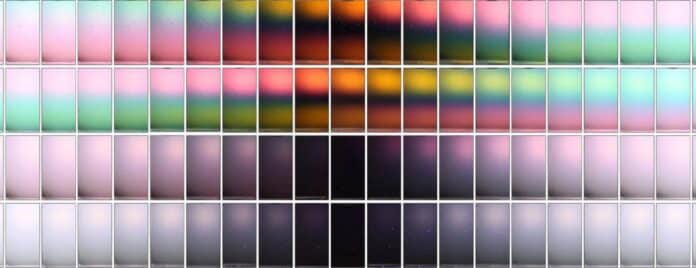Like our left and right hands, some molecules exist in two forms, so their structures and mirror images cannot be superimposed. These compounds exhibit a characteristic known as chirality due to their asymmetry.
Chiral molecules, which feature mirror-image structures and asymmetry, interact with light to produce an optical effect known as optical activity. It has been discovered by a team from the University of California, Riverside, that the distribution of a magnetic field is chiral in and of itself. They found that chirality exists in the magnetic field lines generated by all magnets, including bar magnets.
Yadong Yin, a professor of chemistry, who led the team, said, “We discovered that the magnetic field lines produced by any magnet, including a bar magnet, have chirality. Further, we could also use the chiral distribution of the magnetic field to coax nanoparticles into forming chiral structures.”
The researchers used the magnetic field’s chiral distribution to induce chiral structures in nanoparticles. In the past, scientists have utilized a process called “templating” that necessitates a chiral molecule to take up a precise location on the device. The global applicability of this technology is constrained, and it is not easy to position it on electronic gadgets.
The researcher said, “But to gain an optical effect, you need a chiral molecule to occupy a particular place on the device. Our technique overcomes these drawbacks. We can rapidly form chiral structures by magnetically assembling materials of any chemical composition at scales ranging from molecules to nano- and microstructures.”
The researchers’ method uses permanent magnets that rotate in space to generate chirality. They transfer chirality to achiral molecules by doping, incorporating guest species such as metals, polymers, semiconductors, and dyes into the magnetic nanoparticles that induce chirality.
Yin explained that the technique used by his team produces the chirality using permanent magnets that rotate steadily in space. He claimed that doping adds guest species, such as metals, polymers, semiconductors, and dyes, to the magnetic nanoparticles that induce chirality. Doping is the process of adding chirality to achiral molecules.
Yin stated that an optical effect results when chiral materials interact with polarised light. Light waves oscillate in a single plane when polarised, lowering the light’s overall intensity. Sunglasses with polarised lenses reduce glare to our eyes, while those without do not.
Like our left and right hands, some molecules exist in two forms, so their structures and mirror images cannot be superimposed. These compounds exhibit a characteristic known as chirality due to their asymmetry.
Chiral molecules, which feature mirror-image structures and asymmetry, interact with light to produce an optical effect known as optical activity.
It has been discovered by a team from the University of California, Riverside, that the distribution of a magnetic field is chiral in and of itself. They found that chirality exists in the magnetic field lines generated by all magnets, including bar magnets.
Yadong Yin, a professor of chemistry, who led the team, said, “We discovered that the magnetic field lines produced by any magnet, including a bar magnet, have chirality. Further, we could also use the chiral distribution of the magnetic field to coax nanoparticles into forming chiral structures.”
Yin said, “But to gain an optical effect, you need a chiral molecule to occupy a particular place on the device; our technique overcomes these drawbacks. We can rapidly form chiral structures by magnetically assembling materials of any chemical composition at scales ranging from molecules to nano- and microstructures.”
Permanent magnets revolve in space as part of the researchers’ method for producing chirality. Adding dopants like metals, polymers, semiconductors, and dyes to the magnetic nanoparticles that induce chirality can impart chirality to achiral molecules.
Yin clarified that the technique used by his team produces the chirality using permanent magnets that rotate steadily in space. He claimed that doping adds guest species, such as metals, polymers, semiconductors, and dyes, to the magnetic nanoparticles that induce chirality. Doping is the process of adding chirality to achiral molecules.
Yin stated that an optical effect results when chiral materials interact with polarised light. Light waves oscillate in a single plane when polarised, lowering the light’s overall intensity. Sunglasses with polarised lenses reduce glare to our eyes, while those without do not.
The findings could have applications in anti-counterfeit technology, sensing, and optoelectronics. The method can rapidly detect chiral or achiral molecules linked to certain diseases, such as cancer and viral infections.
The research was funded by a grant from the National Science Foundation, and the UCR Office of Technology Partnerships has filed a patent application related to this work.
Journal Reference:
- Zuyang Ye,Zhongxiang Wang,et al.A magnetic assembly approach to chiral superstructures.Science. DOI: 10.1126/science.adg2657
